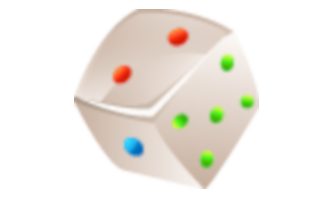Changes in matter
Science, Grade 3
Changes in matter
Study Guide

Changes in matter
Flash Cards

Changes in matter
Quiz

Changes in matter
Worksheets

Changes in matter
Games

Study Guide Changes in matter Science, Grade 3
❮
1
/
3
❯
CHANGES IN MATTER A physical change is when something changes its appearance without changing its makeup. An example of a physical change is chopping wood. An example of a chemical change is burning the wood. Lesson Checkpoint: What is a physical change? Matter can change from one state to another state. Matter can change from one state to another and still be the SAME kind of matter. For example, ice and water are the same kind of matter, even though they are different states of matter. Ice and water are both made out of chemicals. There are several ways matter can change states. One way this happens is when high temperatures causes water to evaporate, water changes from a liquid to a gas. When water is heated and changes from a liquid to a gas, it changes state but has not become a different kind of matter. When matter changes from a liquid to a gas, the water particles have just spread out so that you can no longer see the water. You can’t see the water because it became an invisible gas in the air. When matter is cooled, it can also cause a change in states. An ice cube is a solid that when cooled becomes water which is a liquid. When water is in a liquid state and is heated, the water will soon evaporate and become a gas. © Copyright NewPath Learning. All Rights Reserved. Permission is granted for the purchaser to print copies for non-commercial educational purposes only. Visit us at www.NewPathLearning.com.
Lesson Checkpoint: What is an example of matter changing states? Many different kinds of matter can be combined together to form a mixture which is when two or more kinds of matter are mixed together. A bowl of mixed nuts is an example of a mixture. There are different kinds of nuts in it. When two or more kinds of matter are combined together to form a mixture, even though they are being mixed with something else, the kinds of matter do not change. Different kinds of matter can sometimes be separated from a mixture. Lesson Checkpoint: What is a mixture? © Copyright NewPath Learning. All Rights Reserved. Permission is granted for the purchaser to print copies for non-commercial educational purposes only. Visit us at www.NewPathLearning.com.
A solution is a type of mixture. A solution is when one or more substances are dissolved into another. An example of a solution is dissolving sugar into a glass of water. Dissolve means to break into particles so small that we can no longer see the particles. The dissolved particles seem to become part of the liquid. Sometimes you can separate parts of a solution just like we can do with a mixture. For example, if you boil salt water, water will evaporate and salt will remain in the pan. Sometimes, however, you cannot separate parts that make up a solution. Lesson Checkpoint: What is an example of a solution? Physical changes can change the appearance of matter, but not the kind of matter involved. If you pour water on a rock, it is still a rock, but it is now wet. Chemical changes result when matter combines to produce a different, new kind of matter. When you cook, you create chemical changes. When you mix the ingredients to a cake together and then bake the cake, a chemical change takes place. When matter has gone through a chemical change, it usually CAN’T be changed back into the matter it started as. Can you imagine trying to get the egg back out of the cake after you’ve baked it?! When you bite a piece of food, chew the food, and then swallow the food, it is an example of a chemical change because your saliva breaks down the pieces of food so you can swallow and digest them. The saliva creates a chemical change. Chemical changes supply our bodies with energy which we need to grow and survive. © Copyright NewPath Learning. All Rights Reserved. Permission is granted for the purchaser to print copies for non-commercial educational purposes only. Visit us at www.NewPathLearning.com.
